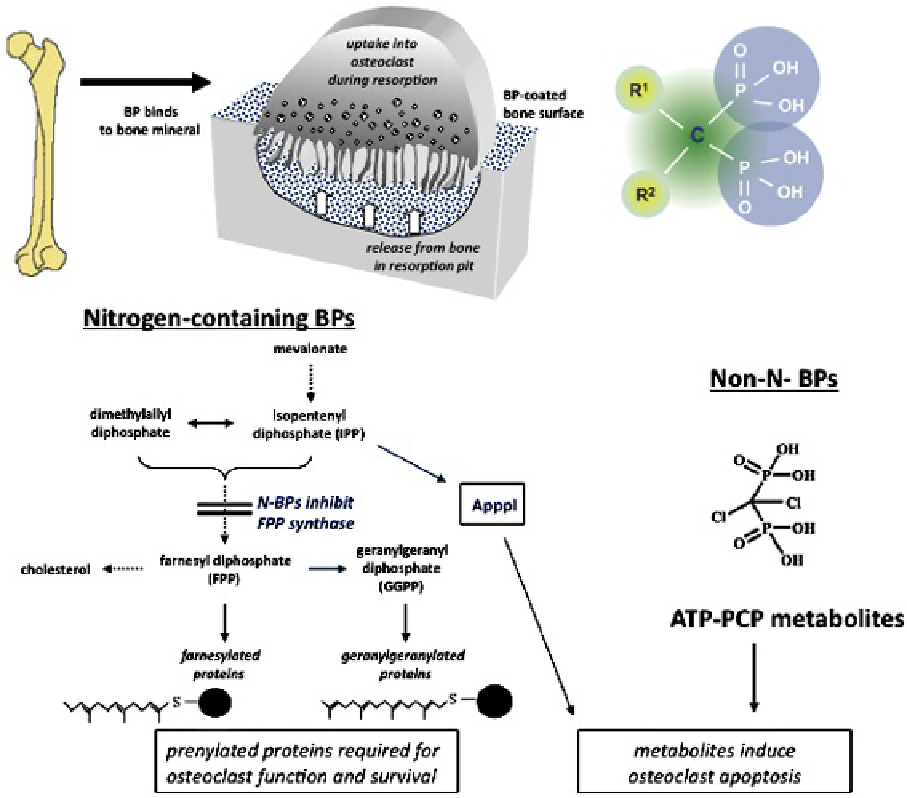what-when-how
In Depth Tutorials and Information
FIGURE 53.2
Mechanism of action of bisphosphonates.
5
the cell, characteristic changes in cell morphology occur;
the ruffled border is lost, and some cells detach from the
bone surface and may undergo apoptosis. There have
also been reports of “giant” hypernucleated osteoclasts,
thought likely to be non-functional, in the bone biopsies
of patients under treatment with alendronate.
17
For many years the mechanism of action of bisphos-
phonates were poorly understood at a biochemical
level (
Figure 53.2
). The earliest studied bisphosphonate
molecules - etidronate and clodronate - were eventually
found to generate cytotoxic non-hydrolyzable analogs of
adenosine triphosphate (ATP) that interfere with ATP-
dependent intracellular processes. The cause of osteoclast
cell death after treatment with these compounds may be
through interference with mitochondrial ATP translo-
cases.
16
The nitrogen-containing bisphosphonates - which
include the more potent molecules - are not metabo-
lized to ATP analogs. Instead they act to inhibit farnesyl
pyrophosphate synthase (FPPS), part of the mevalon-
ate/cholesterol biosynthesis pathway. Inhibition of FPPS
prevents biosynthesis of isoprenoid compounds and
in particular farnesyldiphosphate and geranylgera-
nyldiphosphate. These molecules are required for the
prenylation - essentially the addition of lipophilic tails -
of multiple small guanosine triphosphate-binding pro-
teins including Ras, Rac, Rho and Rab, preventing their
trafficking and incorporation into membranes and gen-
erally interfering with intracellular signaling processes.
It appears that geranylgeranylation is more crucial than
farnesylation in osteoclast activity and survival, consis-
tent with the known effects of geranylgeranylated pro-
teins on crucial osteoclast processes such as membrane
ruffling and vesicular trafficking. Crystallization of the
FPPS enzyme has shown how the tertiary structures of
enzyme and bisphosphonate inhibitor interact and has
provided clear insights into the role of the nitrogen atom
in the R2 side chain.
6
The structural changes in bone engendered by
bisphosphonate action in children with OI are (1)
increased bone width in tubular bones (
Figure 53.3
);

